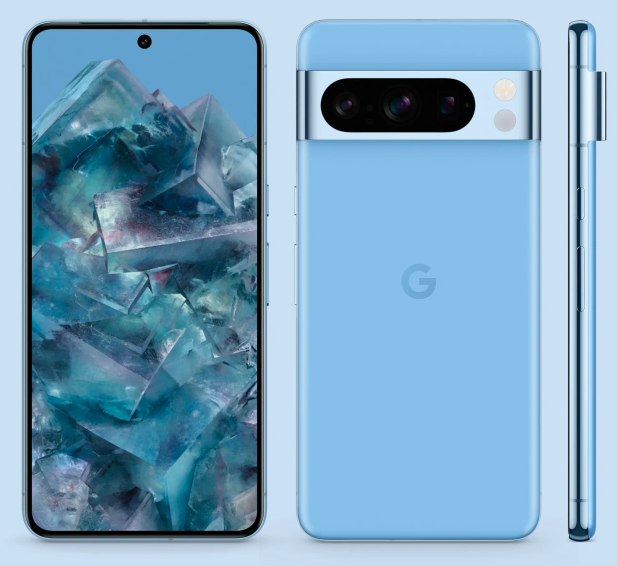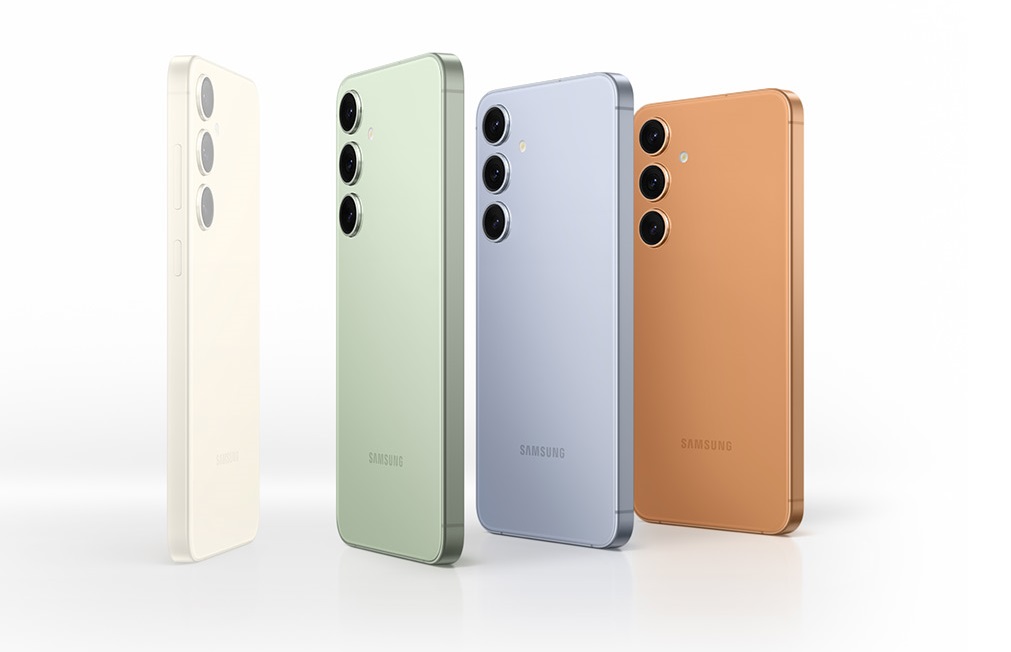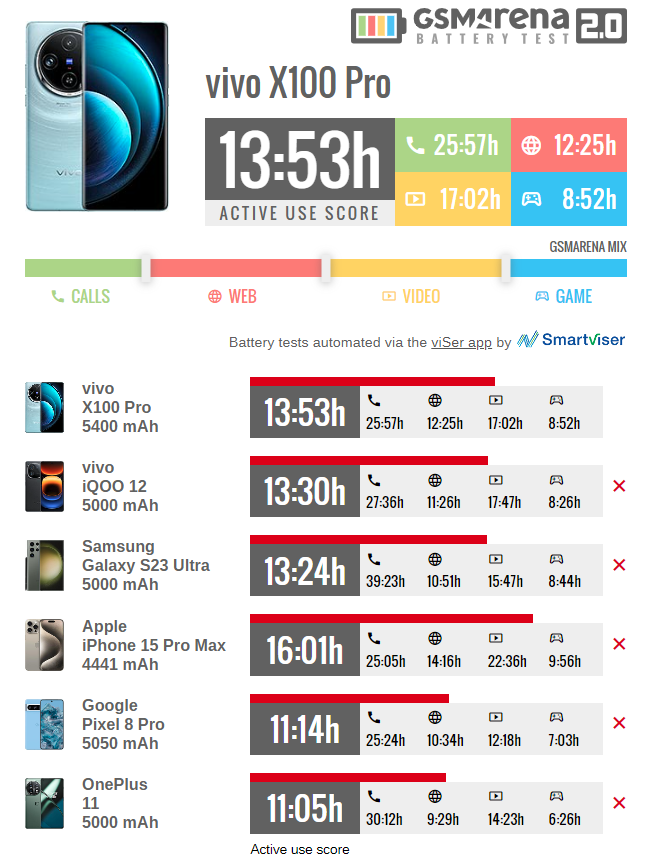You can’t buy the Pixel 8 Pro in Malaysia; But here are 3 other alternatives

The Google Pixel 8 Pro is hot stuff in many parts of the world…except Malaysia. Why? Cause it never launched here in the first place. Just like the many superstar artists that skip past our little peninsular, your best bet in experiencing the Pixel 8 Pro is over the causeway in Singapore.
It’s not your only bet, though. There are a few rare retailers in Malaysia that do offer the Pixel 8 Pro (we’re hearing TechBug is pretty reliable, but don’t take our word for it), but you might have to contend with a few limitations such as nil warranty support and lack of any authorized repair/service centres.
If you’re willing to go through the hassle, or live with these limitations – then by all means, the Pixel 8 Pro might be a great phone for you.
Or else, we’d recommend going for any one of these other smartphones that have more or less the same – in some cases even better – capabilities than Google’s flagship.
Here, we’ll give 3 alternative smartphones to the Google Pixel 8 Pro.
What makes the Pixel 8 Pro good?

Before we dive headfirst into the alternatives, let’s look at its official retail price upon launch, as well as what makes it a great device.
All the Google Pixel 8 Pro models that launched in Singapore comes with 12GB of RAM, with up to 512GB of storage. The official pricing in SGD as well as its estimation in MYR are:
- Google Pixel 8 Pro (12GB+128GB) – SGD1,549 (~RM5,466.62)
- Google Pixel 8 Pro (12GB+256GB) – SGD1,649 (~RM5,819.54)
- Google Pixel 8 Pro (12GB+512GB) – SGD1,849 (~RM6,525.44)

At those prices, the Pixel 8 Pro competes in the flagship segment against the likes of Samsung’s latest S24 Series and the iPhone 15 Series. In that regard, Google’s flagship then has the heavy obligation to deliver performance that can hold itself well in the market. The device has some really good things going on for it, including:
- Displays: The Pixel 8 Pro sports a 6.7″ LTPO OLED display which pushes 1344x2992p resolution. Thanks to it being LTPO, you’ll have adaptive refresh rates that maxes out at 120Hz and dialed down to 1Hz if needed. It’s a super bright display, with peak brightness reaching 2,400nits. It has support for HDR10+ videos, and a hardy layer of Gorilla Glass Victus 2.
- Triple Cameras: The Google Pixel 8 Pro has arguably some of the best cameras you’ll find, both in terms of hardware and software. Where hardware is concerned, it has a 50MP main camera with 2x optical zoom and OIS. This is flanked by a 48MP telephoto lens with 5x optical zoom and OIS, as well as a 48MP ultrawide lens.
- AI Enhancements: Aside from just impressive hardware, the Pixel 8 Pro comes with powerful AI enhancements never before seen on smartphones (when it launched). One of those includes a Magic Editor tool, which allows you to move and resize subjects with just a few taps and drags; letting AI handle the rest by filling in the background and cropped spaces. Another worth the mention is the Best Take tool, which swaps faces between multiple photos so you can have everyone looking at the camera for the ‘perfect’ photo.
- Software Support: Another mega breakthrough with the Google Pixel series is the extensive seven years of software support, encompassing both Android OS updates and security patches. Most brands are usually graceful enough to give 3-5 years, so a 7 year software support is very much welcomed.
Alternative #1: Samsung Galaxy S24+

Samsung Galaxy S24+ (256GB) – RM4,899
Samsung Galaxy S24+ (512GB) – RM5,399
Samsung’s S Series has officially made its debut in 2024, with the flagship contenders of the year being the Galaxy S24, Galaxy S24+, and Galaxy S24 Ultra. Technically speaking, this year’s anticipated Google Pixel 9 Series should play direct competitor to the S24 Series, but since the Pixel 9 launch is further down the line, as of now, the S24 Series stands as a solid alternative to the Pixel 8 Pro; in particular, the Galaxy S24+.
The Galaxy S24+ and Pixel 8 Pro share likeness in many areas, including display sizes. Both are 6.7″ LTPO displays with adaptive refresh rates from 1Hz to 120Hz; all made sturdy with a layer of Gorilla Glass Victus 2. The resolution on the S24+ is a fringe higher though with a 1440x3120p (vs. 1344x2992p on Pixel 8 Pro); it’s a pretty miniscule difference, and something you shouldn’t worry about if you’re considering the Pixel. Peak brightness also tops out higher on the S24+ with 2,600nits, again, by only a hairline (vs 2,400nits on Pixel).

Image Credit: Samsung
Where the S24+ goes 1-for-1 with the Pixel 8 Pro is in the host of AI tools introduced in the S Series. It seems likely that Samsung pushed much of their R&D efforts into AI enhancements more than anything else, as the main highlight of the launch fell mostly on its new AI tools. And yes, one of them includes Generative Edits which allows you to remove, reposition, and expand subjects within seconds, automatically fill up the borders and empty spaces – the full works. Other AI tools non-related to photo altering is the Live Translation for both calls and chats, Note Assist, and Circle to Search – among many others.

As for camera hardware, you’ll still have triple cameras on the S24+, consisting of a 50MP (24mm) main camera with OIS, a 10MP telephoto with 3x optical zoom and OIS, and a 12MP ultrawide lens. On paper at least, the Pixel 8 Pro looks to have the more enticing camera lineup in terms of megapixels – but as we all know, photo quality these days rely heavily on computational processing more than hardware. In that regard, the jury’s still out.
It seems Samsung may have taken a page out of Google’s book after seeing how its garnered praises for its 7-year software support. They too have followed suit by offering 7 years of software updates for all devices in the S24 Series, matching the Pixel 8 Pro in terms of longevity.

Image Credit: Samsung
One issue on the Pixel 8 Pro which hasn’t sit well with many of its owners is its weak battery. Despite its 5,050 battery – which is the standard for many flagships – Pixel owners have reported extreme drainage. You don’t have to look far to find a disgruntled Pixel owner; a quick search on Google will show you plenty. Even though the Samsung S24+ has a smaller 4,900mAh battery, early verdicts by consumers say that the S24+ is better optimized for prolonged usage.
On a related note, when it is time to plug it in, the Pixel 8 Pro again loses out against the 45W wired charging on the S24+ (vs 30W wired charging on the Pixel), although the Pixel does boast the faster 23W wireless charging vs. the 15W of the S24+.
Summary
The Galaxy S24+ and the Pixel 8 Pro shares very identical displays. Like the Pixel 8 Pro, the Samsung S24+ comes with a host of AI enhancements, including Generative Edits for editing convenience. Camera hardware on both devices are comparable. Samsung looks to follow Google’s lead in providing longevity, with the S24+ also having 7 years of software updates. Where the S24+ looks to gain advantage is in its battery, with early users expressing how pleased they were with its lifespan, in contrast with the Pixel 8 Pro, which has garnered plenty of critics.
Alternative #2: Sony Xperia 1 V

Sony Xperia 1 V (12GB+256GB) – RM6,399
We’ll reiterate once more that if you’re seeking for a smartphone with an extensive battery lifespan, the Pixel 8 Pro isn’t it. Instead, what you should be gunning for is the Sony Xperia 1 V.
It goes without saying that you’ll be venturing into a very niche market here. Just look around and see how many people actually own a Sony Xperia 1 V? Or any Sony phones for that matter. It’s not popular, but it is very good – especially when it comes to battery life.
Reviews have it so far that you’ll get at least 7 hours of screentime, with more juice in the tank to hit 10 hours. This is comfortably a 2-day phone if you’ve ever seen one. If you need further proof, we recommend reading up on the device’s battery test ran by Trusted Reviews, as well as a peek at its real world usage on TechOdyssey. The Sony Xperia 1 V matches the Pixel 8 Pro in terms of charging, with both having a 30W wired charging speeds. You’ll also find wireless charging capabilities on the Sony, but its speed is undefined.

What you might need to get used to is the Xperia’s 21:9 aspect ratio. This is a much narrower display compared to most other flagship devices, the majority of which usually comes with a 20:9 ratios. It could prove to be a good change, since a narrower form factor usually allows for better handling and grip. Plus, if you’ve got small hands, you won’t have to overstretch your thumbs to reach the top corners of your display.
On that note, the Xperia 1 V sports a 6.5″ OLED display with 120Hz max refresh rates. It isn’t LTPO, unfortunately, and so misses out on adaptive refresh rates. It has a 1644x3840p resolution that’s higher than the Pixel, but shares the same glass protection with a Gorilla Glass Victus 2.

There isn’t a direct winner as to which device takes the camera throne, but many have said that Sony hit the mark with the Xperia 1V. Remember, Sony smartphones may not be recognized worldwide, but their top-line cameras are. That’s a wealth of experience that Sony has over other brands, so it’s no surprise that its cameras are ace.
On paper, you’re dealing with a 48MP main camera with Sony’s 1/1.35″ Exmor T sensor, a 12MP telephoto camera, and a 12MP ultrawide lens. Both the main and telephoto lenses support OIS. AI does not feature on the Xperia phone, at least not for this 2023 model.

Nevertheless, where most of the praises go to though, isn’t still photography, but video recording. The Sony Xperia 1 V shoots in 4K, just like the Pixel 8 Pro. However, the Sony has a wider array of FPS to go with the 4K, including at 24/25/30/60 and 120fps (vs. 4K@30/60fps on the Pixel). Video creators in particular will appreciate the S-Cinetone, a colour profile template which you’ll find also on Sony’s camera line. For a sample of the videographic possibilities you can expect on the Sony Xperia 1 V, check out these previews from filmmakers James Matthews and Kohki Yamaguchi.
As for software updates, you won’t get as many as the Pixel 8 Pro, with the Xperia 1 V only supporting 3 years of updates.
Summary
The Sony Xperia 1 V has phenomenal battery life according to reviews. It is a relatively unique flagship smartphone with a 21:9 aspect ratio. Displays are just as impressive as the Pixel 8 Pro, but the Sony offering does not have adpative refresh rates. Sony’s photo-taking is impressive, but its video recording capabilities are even more so. Unfortunately, despite being one of the more pricey flagships, the Sony Xperia 1 V only supports 3 years of software updates.
Alternative #3: vivo X100 Pro

vivo X100 Pro (16GB+512GB) – RM4,599
A much cheaper, yet still a solid alternative worth considering is the vivo X100 Pro. Retailing at RM4,599, vivo’s 2024 flagship offering isn’t going to break your bank as much as the RM5,000 – RM6,000+ alternatives, so that’s already a plus point.
Additionally, unlike the Pixel 8 Pro and its suggested alternatives, the vivo X100 Pro comes with a dual chipset for boosted performance. It’s powered by the Dimensity 9300 chip – the first phone to don MediaTek’s flagship chip – and vivo’s proprietary V3 chip. The use of a supplementary chip is often attributed to taking some load of the primary chip, allowing it to be more efficient in handling main processing tasks. In this case, the V3 chip handles processing capabilities relating to image and video processing, gaming frame rates, and visual processing.

On visuals, you’ll have an LTPO AMOLED display on the vivo X100 Pro, across its larger 6.78″ display. There’s lesser resolution with 1260x2800p, but peak brightness maxes at 3,000nits, higher than any of the devices previously mentioned.
Again, you won’t find AI making its mark here. Nevertheless, you can expect camera performance to be solid thanks to vivo’s continued collaboration with longstanding lens maker ZEISS. The vivo X100 Pro utilizes the largest camera sensor in this list, with a 1″ ZEISS sensor backing the 50MP main camera. There’s also a 50MP ZEISS APO Floating Telephoto lens which vivo claims reduces colour distortions while producing accurate colours. Completing the array is a 50MP ultrawide lens.

Enhancing the camera further is ZEISS’ T* Coating – an anti-reflective coat that rids photos of lens flare and reflections.
The vivo X100 Pro’s camera has caught the eye of many, so much so that it’s being pitted against the likes of the Galaxy S24 Ultra (starting price RM6,299). If you want to see how the two stack up against each other, you can check them out on Dariusz Tech and TechTablet.
Early reviews puts the vivo X100 Pro’s battery in good light, with some impressive figures coming out of GSMArena’s battery test, which, to no surprise, tops the scale ahead of the Pixel 8 Pro. If you’re wondering, the vivo X100 Pro packs a 5,400mAh battery, with 120W charging that only takes 31 minutes to reach 100%.

As for its update policy, you can expect 3 Android updates and four years of security patches for the X100 Pro.
Summary
The vivo X100 Pro is the cheapest alternative to the Pixel 8 Pro. It packs dual chipsets consisting of MediaTek’s flagship Dimensity 9300, and vivo’s own V3 chip for boosted performance. Displays are comparable with the Pixel 8 Pro. As for cameras, vivo’s partnership with ZEISS puts it in good stead, and while it does not have the host of AI features that the Pixel 8 Pro has, photo quality is being compared to the likes of the significantly more expensive Galaxy S24 Ultra. Battery life on the vivo X100 Pro is excellent, and so is its 120W fast charging.
Like what you see? Read more of our articles below!











